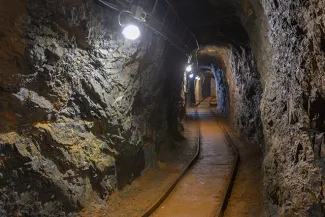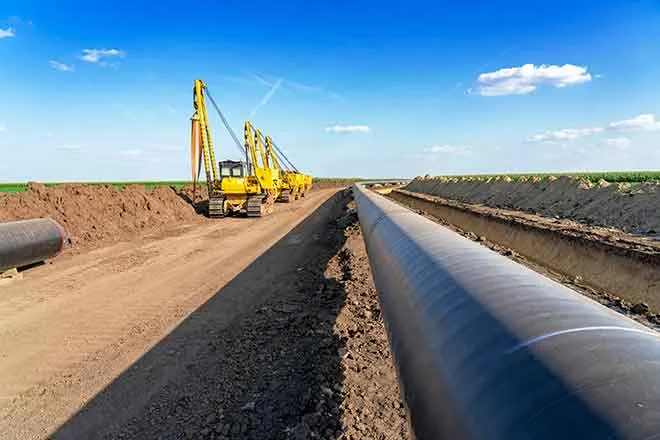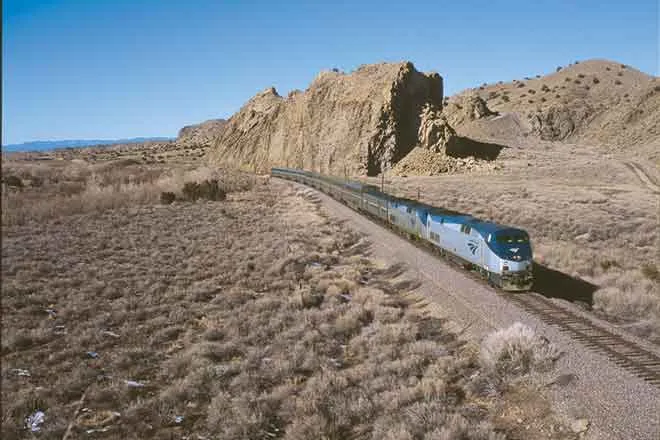
Nevada mine delayed amid lithium price plunge
A proposed lithium-boron mine in Nevada has been delayed for a second time amid a lithium price crash caused by softer electric vehicle demand and an oversupply of the battery metal globally.
Earlier this month, Australian-based mining developer Ioneer Corp. agreed to delay initial construction on their Rhyolite Ridge lithium-boron project in Esmeralda County until at least March 2026, according to a stipulated agreement.
The updated timeline comes after Ioneer lost its biggest investor in February when South Africa-based Sibanye-Stillwater scrapped its planned $490 million investment in the project, due in part to plummeting lithium prices.
Low lithium prices have forced a raft of companies to pause or delay spending on projects from Quebec to South Carolina and Argentina to Australia.

Mining tunnel. © iStock - svedoliver
Lithium prices have fallen more than 80% since their peak in 2022, reshaping market dynamics including in Nevada. Benchmark Mineral Intelligence said average lithium prices soared to nearly $80,000 per tonne globally in December 2022, before hitting around $9,000 per tonne this July. Analysts expect lithium prices to remain volatile in 2025.
Despite the construction delay, Ioneer said the company is still expecting production to start in 2028, following a three-year construction period once the company makes a final investment decision to green light the project.
That final decision will also depend on Ioneer finding an equity partner to replace the capital lost when Sibanye-Stillwater pulled out of the mine’s development.
Last month, Ioneer formally began the search for an equity partner capable of supporting an accelerated development timeline and advancing lithium-boron production at the mine. The search is expected to take four to five months, according to Ioneer.
“We’re talking to many, many different companies who have an interest in this project because of its lithium, because of its boron, and because it’s in the United States,” said Ioneer Managing Director Bernard Rowe.
Earlier this year, Ioneer also secured a $996 million federal loan from the Department of Energy following federal approval of the mine.
Volatility in the lithium market will not deter investment or the eventual construction of the Rhyolite Ridge lithium-boron project, said Rowe, adding that the project’s unique attributes and low-cost structure make it an attractive project.
Rhyolite Ridge in Nevada is one of the only two major known global deposits of lithium-boron. Boron is a mineral used in everything from glass to medicine to cleaning products. If constructed, it would be the first new boron mine in the U.S. in nearly a century. The revenue split between the two commodities is roughly 70% lithium and 30% boron, providing a potential hedge when lithium prices drop.
Ioneer estimates the cost of production at the mine at about $5,200 per ton of lithium after factoring in revenue from the boron produced at the mine, placing production costs in the lowest quartile of the global lithium cost curve.

Ioneer has experience with lithium volatility, having built similar projects during periods of lower lithium prices, Rowe said. Specific project economics rather than industry-wide conditions determine viability, he added.
“There’s very logical reasons why there is volatility. It’s because it’s a small market that’s growing rapidly, and it’s easy to get a mismatch, to either have too much supply or not enough. It’s very easy for that to happen when you’re dealing with a very small, but rapidly growing market like lithium,” Rowe said.
Simon Jowitt, the state geologist for the Nevada Bureau of Mines and Geology at UNR, said lithium mines that sustain low production costs can cope with lower prices. He pointed to Albemarle Corp.’s Silver Peak Mine in Clayton Valley, which has remained active since the 1950s due to its ability to sustain low production costs.
Getting to that point will be more difficult for mines that haven’t broken ground yet, said Jowitt. Construction is the most expensive period for a mining operation and requires significant capital expenditure without immediate returns. That can lead to companies pulling out of projects during drops in lithium price while investors look at more price-stable metals like gold, silver, and copper.
“We’ve seen this low lithium price impact development and slow development of lithium operations, and actually seeing some mines shutting down in Australia and other countries,” said Jowitt.
“The mines that are under construction are likely to wait until they see a rebound in the lithium price,” he added.
An Ioneer study released in June also quadrupled Rhyolite Ridge’s potential lithium-boron reserves from 60 million tonnes in 2020 to 247 million tonnes, sharply increasing both the project’s mine life and its development cost.
The reserve boost extends the expected mine life to 95 years, up from 26 years outlined in the company’s 2020 feasibility study and increases capital expenditure by more than doubled to $1.67 billion, up from around $800 million.
A longer life span could also prove vital. Despite current volatility, mining companies and analysts anticipate that demand for lithium will rise over the next decade due to the increasing adoption of electric vehicles and renewable energy storage technologies.
While it’s difficult to predict future lithium prices, Jowitt said analysts expect lithium prices to become less volatile as the market matures, but that will take time and depends on demand for lithium-ion batteries and electric vehicles.
A recent U.S. Geological Survey analysis found that about 87% of global lithium production goes into batteries, and the vast majority of those batteries are for electric vehicles.
However, in the near-to-medium term, production cuts may be necessary to stabilize prices and rebalance the market.
“Over the next 30 years, we are going to see a significant increase in demand for lithium, and you can say that for a wide variety of different commodities due to increasing electrification and so on. But 30 years is too long a period to actually base any development decisions on,” Jowitt said.
The mine has also faced other troubles. The project has attracted fierce opposition from conservation groups which oppose the mine’s encroachment on critical habitat reserved for the endangered wildflower Tiehm’s buckwheat. The delay was a result of a stipulated agreement between Ioneer and the Center for Biological Diversity in order to avoid a preliminary injunction for an ongoing lawsuit against the mine.

















